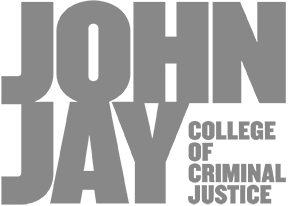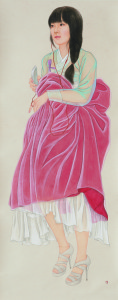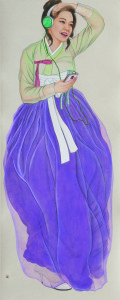The Solitude of the Poor in Spirit.
Work diary 1: The portrait of a disappeared subject in artistic metaphor
If I had to categorize my works in the traditional artistic style, they would probably be labelled as self-portraits. It may be the limitation brought on by work form which centres on a person, but in all my current works, I focus on depicting myself in any way possible. Furthermore, I do not believe that it is all that important to actually objectify what artistic meaning it connotes. Reason being that I somewhat vaguely believe that when the artist’s sensitivity or thinking becomes standardized and regularized, and becomes further more conceptualized, it increases needless concerns. Moreover, I do not believe that concerns about needless contemplations and concerns about defining the meaning of the artistic ‘subject as a person’ are important. Of course, looking back, I can’t help but think that I probably have been this way all the time.
The main topic of my works these days is ‘communication’. True communication might be achieved when a subject disappears, the relationship between a subject and the ‘Other’ (the other person) melts away, and furthermore, the existence of the Other is nullified, but I cannot deny that I still stick to the realization of true communication. Based on the fact that art is a human activity that aims to find the meaning of the subject, or one that aims to possess meaning on its own accords, making the subject cease to exist is rather a hard thing to do. However, the changing form of art or its attention centres on expanding the awareness towards the Other. This all stems from the topic of communication. The subject is only the shadow of the Other. This means that the subject that stems from my self is not free from the Other, the society, or on a smaller scale, small happenings that occur around us. Therefore, the beauty in my works throws away ‘the illusory mask of beauty’ that appeals to objectivity. It no longer cries out to the Other in an attempt to appeal its desire to show its beauty. It refuses to long for a thirst that cannot be quenched.
The beauties in my works stand in the centre of a city, next to a fancy shop window, or in and out of small street corners. It is as if it is trying to meet the world that it had neglected for a while.
Work diary 2: The artistic variation of ‘communication’
Let us now talk about ‘communication’.
It is said that all the creatures that comprise of the natural world possess a desire to become similar to the surrounding it is in. This goes the same for the chameleon that changes its colour to match its surrounding or for humans travelling in an unfamiliar environment. Thus, all forms of life on Earth form a symmetrical structure. Could it be that this is a show of a primitive desire to affirm oneself including a basic desire to live? A desire to affirm oneself cannot be completely distinct from a desire to live.
Let’s talk about another topic.
While living, no person can truly look upon oneself before death. However, no person can also be free from the desire to identify the existence of oneself. Thus, we are always at the border between the belief that the picture depicted in the mirror is the true us and the belief that it is but an illusion.
This is the current state of my work progress and my attitude towards it.
Mirror…I also cannot ever see my true face until I die. If need be, I can check out all parts of my body save for my back. However, only through using a tool called the mirror can I actually see my shape. While realising that it is but an illusion, I cannot help myself from checking the mirror several times in a day. Is this repetitive process something I do for myself as the subject? If so, I cannot help but see the irony of the situation. While knowing that I cannot ever truly see myself before death, I am continuously checking the image of myself that is portrayed and recognized by the Other.
Only the Other can see my face in person. The true nature of the subject is a projection of myself that is enabled only by the Other. Thus, the subject is always the shadow of the Other. The Other is the mirror for the subject. Only through this mirror can I see myself. Is this not the deficiency that we cannot escape?
‘Deficiency’… The moment I realize my deficiency, the desire to become a perfect being tries to take over the hole left by my deficiency. However, this is but a desire. We must acknowledge that this is an unfillable hole.
Lastly, I want to talk about my works.
The self-portraits in my works are mirrors that portray myself and the Other within me. I view the unfamiliar myself within me through the Other. My desires are always unfulfilled and exist as a lump of deficiencies. This is what my self-portraits circle around.
My works, the portraits of a beauty, draw from feelings of loss such as ‘alienation’, ‘loneliness’, and ‘deficiencies’. It is an artificial space that was created based on a yearning for, jealousy of, and envy towards ‘youth and beauty’. Based on the uncomfortable belief that conversations through technologically made Social Network Services (SNS) comprise up true communications, meaningless words are floating in the unreal illusory space, and the fictional and finally virtual meanings leave behind feelings of alienation and a sense of loss. Might I be wandering to try to fulfil my sense of deficiency and loss by hiding ‘my real self’ behind artificially photo-shopped images and hypocritical representations of myself?
In my works, such images appear as the main topic. Although my drawing techniques that outline the person with a light and fine brush and then paint inside of the outlines are reminiscent of a traditional Joseon Dynasty ‘portrait of a beauty’, the beauty also fully enjoys the conveniences of modern technology in the current space. In that space, I create ‘diachronic unrealities’ that fill and synchronize the intervals of thinking, which were not possible due to the differences of time dimension. My imagination gathers different everyday events around me and of the Others and reassembles them into one. After that, I smile elusively and walk around in the space I created. I promenade with the open eyes and in the unsure space that exists between the awaken reality and the deep dream, much like that of Zhuangzi’s ‘Dream of a Butterfly’.
Sometimes during my walks, I find myself worrying. In that days dream, I flail both arms as I am caught in a mesh of a net. Both arms are trapped in the net and I resent gravity. My resenting motions hold on to the net as I frail about in order not to fall. As a result, my walk for that day resulted in me sweating like an athlete who ran 100 metres. I should have relaxed and raised both legs. That day’s walk was closer to a wandering.
Such wandering sentiment is reflected in the ‘beoseon’, Korean socks that can be seen slightly through the bottom of the dress. One of my acquaintances L points out that the white beoseon is like me, flailing about when trapped in a net. Sometimes, the foot that was hidden beneath the dress will rise up into the world, and at times, it stays hidden underneath the dress and tries to view the world with only its tip. Thus, the beauty enjoys the mediums created by modern technology, but its foot, which shows only the tip, is still trapped in a net.
In L’s somewhat displeasing comment, I find my deficiency. I find my wandering. I find the lack of communication. Perhaps the tip of the beoseon represents my deficiency, my hole, and my gap.


